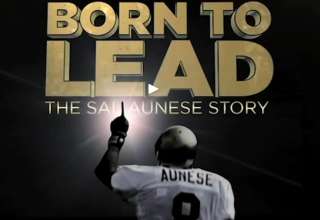Auteurism
The French magazine Cahiers du cinéma was founded in 1951 and quickly became a focal point for discussion on the role of directors in cinema. François Truffaut criticized the prevailing “Cinema of Quality” trend in France in his 1954 essay Une certaine tendance du cinéma français (“A certain tendency in French cinema”). He characterised these films as being made by directors who were faithful to the script, which in turn was usually a faithful adaptation of a literary novel. The director was used only as a metteur en scene, a “stager” who simply adds the performers and pictures to an already completed script. Truffaut argued that the directors who had authority and flexibility over how to realise the script were the ones who made better films. He coined the phrase La politique des auteurs (“The policy of the authors”) to describe his view. These discussions took place at the beginning of the French New Wave, where the Cahiers du cinema critics, Truffaut, Jean-Luc Godard, Jacques Rivette, Claude Chabrol and Eric Rohmer would put this policy into practice in their own films. U.S. film critic, Andrew Sarris coined the phrase “the auteur theory” to translate la politique des auteurs, and is credited for popularizing it in the United States and English-speaking media. He first used the phrase in his 1962 essay Notes on the Auteur Theory in the journal Film Culture. He began applying its methods to Hollywood films, and expanded his thoughts in his book The American Cinema: Directors and Directions 1929–1968, which is still ahead of its time. The impact of Sarris’ work was that each film should focus less on its stars and more on the overall film itself. New York Magazine’s Pauline Kael initially dismissed the theory as ridiculous, taking the common road that a film is a collaborative group effort. A war of words took place in the press between Sarris and Kael, with many critics proclaiming to be Sarrisites, while others stuck with Kale’s humanistic approach, basically looking at film as an adjunct to a novel (literary) and a play (actors). At the time of the Hollywood Renaissance (roughly 1970s), Kael switched gears and started embracing certain directors: Robert Altman, Bernardo Bertolucci and Sam Peckinpah, but still couldn’t resist gushing in praise over a Barbra Streisand or Diana Ross performance in a shallow vehicle role. In the end, Sarris said that Kael was probably more anti-genre, than anti-director. But she really could write.
Andrew Sarris and the “A” Word
by Richard Brody
Andrew Sarris, who died today, at the age of eighty-three, is the one indispensable American film critic. He brought to American film criticism its crucial idea, its crucial word (“auteur”), and the crucial taste that it signifies: the recognition that the best of Hollywood directors are the equals of great directors anywhere in the world, and that they are the equals of painters, writers, and composers of genius.
Sarris (whom I met only briefly, at several screenings) was the American critic who meant the most to me when I was first learning about movies, because I sensed that he was interested in the essential thing — what makes the cinema an art. In the classic split between hedgehogs and foxes, he was the great hedgehog of American criticism. He knew one big thing: the colossal gravitational pull of the director, the true star that held all in its orbit and gave its light to reflect. Sarris may have suffered for staring too long and too fixedly into the directorial sun, but before he showed everyone which way to look, hardly anybody knew that it was there at all. Which is why, on this sad occasion, it seems fitting to talk about the idea and the word with which his name will always be linked.
The most interesting thing about the term “auteur” is that though it’s the ordinary French word for “author,” in English, it refers solely to movie directors, especially those whose work is deemed artistically ambitious. That’s because it was an aesthetic shock when the word was used, about sixty years ago, by a group of French critics at the newly founded Paris-based journal Cahiers du Cinêma. Their idea was that movie directors exert the same artistic control on (and bear the same moral responsibility for) their film as a writer does for a book, and can therefore be considered the “author” of a film.
They weren’t the first to recognize that directors are artists, yet their writings proved very controversial, for four reasons. First, they didn’t emphasize movies’ stories — they didn’t ignore them, but they didn’t take political subjects and the adaptations of major literary works to be of any greater intrinsic importance than crime stories, love stories, comedies, Westerns, or musicals. Second, they largely considered acting, cinematography, and the other elements of production in terms of their reflection of the director’s art. Third, they considered some Hollywood directors, working in the industry and serving its commercial ends, to be the equals of European filmmakers working within an expressly humanistic tradition (which is why they came to be known as “Hitchcocko-Hawksians”). Fourth, they saw the art of the cinema as the exemplary art of the era, and so considered directors to be the leading artists of the day. (There was also a fifth, strictly local, reason: they considered most of the major French directors of the time to be terrible filmmakers and denounced them and their films with flamboyant invective.)
From the time the idea of the auteur crossed the ocean, in the early sixties, to this day — thanks mainly to Sarris — it has been consistently misunderstood by its detractors, in part because of Sarris’s linguistic peccadillo. He referred to the “auteur theory,” as if it was something that could be proved. The phrase that the French critics used for their idea was la politique des auteurs. It was a “policy,” not a rule, and a “politics,” because it was aimed at power. These critics didn’t only seek the widespread recognition of the directors they admired but (as Jean-Luc Godard told me in 2000) thought they were, in a way, prolonging the French Resistance “against a certain sort of occupation, in the cinema, by people who had no business being there.” They were both asserting a living pantheon of filmmakers they admired and seeking to throw out interlopers in order to make a place for themselves in the film industry (thus the invective).
Of course, these critics — notably, Godard, François Truffaut, Jacques Rivette, Claude Chabrol, and their “godfather” at the magazine, Eric Rohmer, about ten years their senior — did make a place for themselves in the industry and in the ongoing history of cinema. Their own films are the evidence that has confirmed, even canonized, their critical ideas. They were the first to consistently conceive of directors’ work psychologically — to identify themselves with directors and to pass from a consumerist guide to an inside view of the cinema. And this is where the most basic misinterpretation arises.
If auteurism were nothing other than the recognition of arcane patterns across a director’s body of work, it would have had a short and obscure run. But in fact, its power comes from its inspiration of artists. Wes Anderson described his primordial auteurist experience when I interviewed him for a Profile that ran in the magazine in 2009. His family’s Betamax tapes of Alfred Hitchcock’s films, “with an orange-colored box for ‘Vertigo’ and a blue one for ‘Rear Window’ and a beige one for ‘The Man Who Knew Too Much,’ ” was a central experience for him as a child:
Watching those, you know, the name of the director was right there on the front, you were conscious that this guy was a movie artist, it wasn’t an actor and you weren’t reading about how they built the robots or something like that, instead it was some guy whose thing is making images and sounds and things to tell the story.
Auteurism is the mode of criticism through which burgeoning directors identify those established filmmakers in whom they see themselves — and the future of the art form — reflected. It isn’t a matter of seeing patterns but of seeing directors (as if present and holding forth on the other side of the screen) and identifying with them — not by self-abnegation but by elective affinity and imaginative sympathy.
Resistance to the notion of the auteur comes from partisans of so-called collaboration — the evidence of actors performing scripts. It’s a natural thing for film critics (who are, first of all, writers) to identify most closely with screenwriters, just as it’s not surprising that viewers consider actors to be the fullest inventors of a movie. But most great actors are more or less the inventions of directors (imagine John Wayne without John Ford, or Cary Grant without Howard Hawks and Alfred Hitchcock, or Katharine Hepburn without Hawks and George Cukor, or Judy Garland without Cukor and Vincente Minnelli). As for screenwriters, don’t believe the credits: strong directors don’t just oversee the recording of content dictated from an inviolable script, they take an active hand in the substance of a script — all the more so in the era of the independent producer, from the fifties and beyond. (That’s one reason why the postwar years were a golden age in Hollywood.)
What those who reject the primacy of directors really favor are norms — whether the political norms of an expressly ideological cinema or the so-called system’s ability to turn out a consistently entertaining (or otherwise ingratiating) product. They emphasize collaboration as a way of limiting the prerogatives of the individual, of subordinating the artist or the freethinker to rules, whether of religion, tradition, or ideology. And in the process, they set themselves up as the defenders of consumers against ostensibly shoddy, deceptive or somehow harmful merchandise. The core of resistance to auteurist ideas is populist demagogy.
That’s true of Pauline Kael, who made her name as Sarris’s principal detractor and whose acolytes — who seem to put their hands on the Ouija board to consult with her before writing — continue her grudge against the “a” word. Sarris, for his part, was resolutely independent. His following came not from the cultivation of a club or a clan but from the allure of the ideas he put forth. He didn’t embody the spirit of youth at the Village Voice, where he wrote for decades — rather, he inspired it, propelling generations of filmmakers and critics to go behind the screen, practically or virtually, in ways of their own. Whether he’s read or not, he’s the dominant figure of film criticism in the last half century. Like a director, he is present, exercising his influence, unseen, on a vast array of movie people and leaving a virtual impression on screens everywhere, from art houses to multiplexes.
P.S. I quoted Wes Anderson, above, regarding his youthful experience of the director’s artistry. I’m waiting for one of Kael’s followers to respond that auteurism is all well and good for children, who, when they grow up, will learn about the complex realities of life on a set and in the industry. It’s worth remembering that immaturity was one of the most repellently personal (and misguided) charges that Kael launched at Sarris in 1963. I wrote about that big lie.
D.W. Griffith’s Innovations
Griffith’s innovative shot sequence redefined the movies: first a long-shot, followed by a medium-shot, and then close-up, ending with a return of the long shot, thus creating films of the physiological with strong emotions. The transition of shots, cut on the continuation of the player’s movement, which would seamlessly bridge the scene. The shot sequence served as a form of invisible editing which allowed audiences to follow the narrative. Before the shot sequence, viewers would not be able to understand the sense of time and space by a director going immediately into a close-up. It also freed actors from the confines of the stage, where most earlier films began with players arriving on the stage, and then ending when they exited. There has been no major innovation in film since Griffith with the exception of the advent of sound, which many film scholars still consider a set-back. Towards the end of Griffith’s life, he was dismissed as an outdated movie pioneer, dying of a massive heart attack while waiting for the proverbial ‘phone call’ that never came. Today, his name is met with anger at the mere mention of the director of The Birth of a Nation, whose text is outrageously racist. I recall first seeing the film in a class devoted to minority studies. I was profoundly outraged by the films literary racist content. Later in a cinema studies program at the University of Washington, our professor spoke for an hour about Griffith and The Birth of a Nation, with never a mention of its racism. As the lights went down for our first screening of the landmark film, he quickly mentioned in passing, that we should ‘ignore all that racist stuff’ and concentrate on one of the most beautiful films ever made. As auterist film critics already knew, it is the visual treatment of the text that makes the film art. Perhaps “The medium is the message,” a phrase by Marshall McLuhan in his 1964 book ‘Understanding Media: The Extensions of Man,’ says it best. McLuhan believed that the medium itself, not the content it carries, should be the focus of study. I fully embrace those words; are van Gogh’s paintings of sunflowers art because of the importance or sunflowers, or are they art for his visual treatment of sunflowers? Is a novice painting of Christ on the cross more important than a painting of a lily pond by Monet? I recall film critic James Monaco saying one must learn to read a film. Woody Allen’s comment about Leni Riefenstahl’s Triumph of the Will — a feature length propaganda documentary glorifying Hitler and the new Aryan Nation — also illustrates the point. It went something like, ‘‘I am a Jew and I consider Triumph of the Will a masterpiece.”























